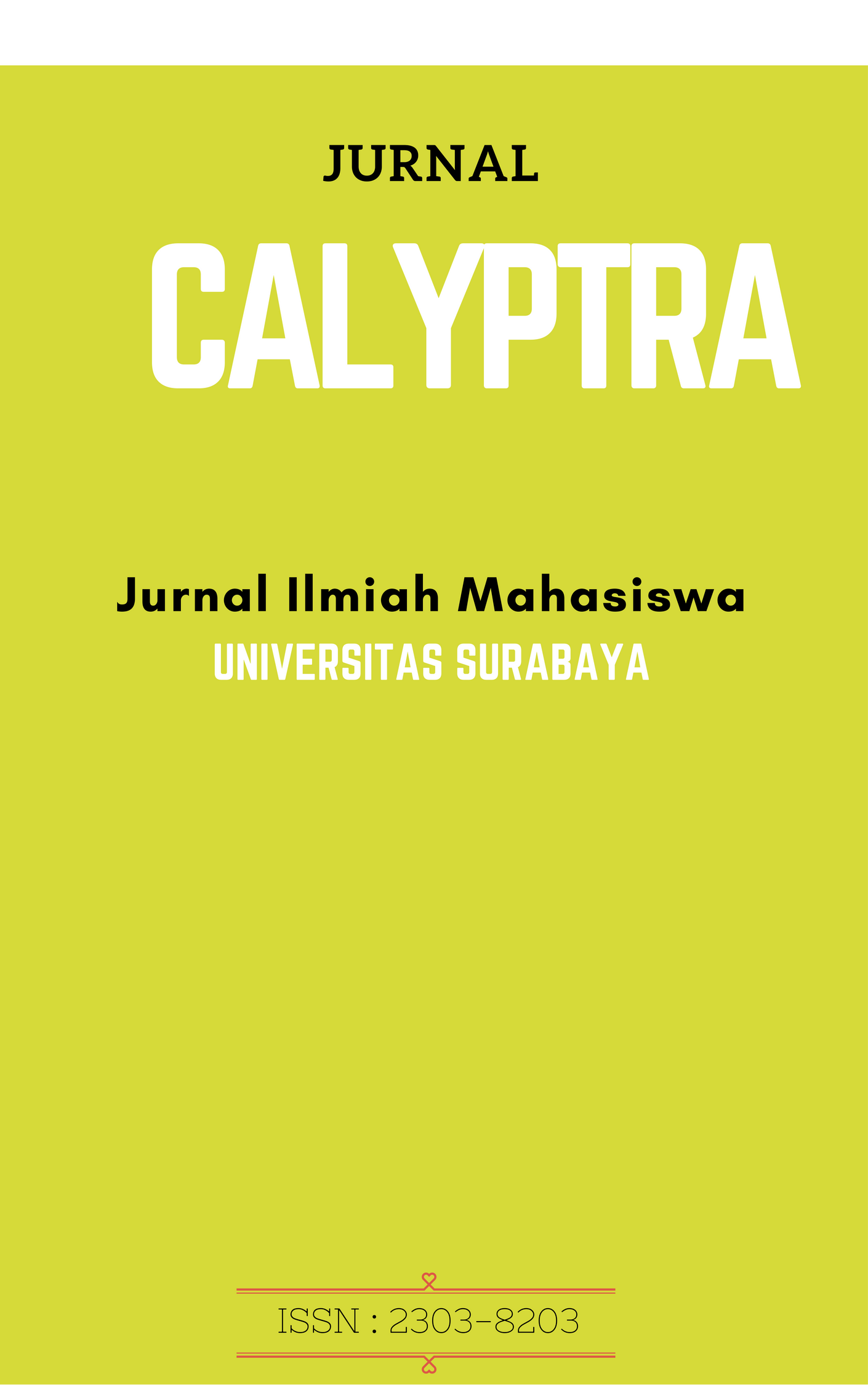PENERAPAN SYSTEM DEVELOPMENT LIFE CYCLE BERBASIS PERILAKU BAGI SISTEM INFORMASI AKUNTANSI PADA PT. “X”
 Abstract Views:
314 times
Abstract Views:
314 times
 PDF - FULL TEXT Downloads:
1788 times
PDF - FULL TEXT Downloads:
1788 times
Abstract
Abstrak - Keberadaan sistem dalam suatu organisasi telah menjadi suatu keharusan agar organisasi tersebut dapat terus bertahan. Sistem yang ada harus dijaga agar tetap relevan proses dalam organisasi tersebut. Hal inilah yang dilakukan oleh PT “X” dengan melakukan proses pengembangan sistem yang baru karena sistem yang lama sudah tidak relevan. Salah satu cara untuk meningkatkan tingkat keberhasilan dalam pengembangan sistem adalah dengan menggunakan System Development Life Cycle (SDLC) dengan memperhatikan perilaku yang mungkin ditunjukan oleh user selama proses berlangsung, atau bisa disebut sebagai SDLC berbasis perilaku. Perilaku yang ditunjukan user akan dilihat dengan menggunakan Technology Acceptance Model (TAM) yang menurut studi yang telah dilakukan oleh berbagai peneliti telah terbukti menunjukkan hasil yang signifikan dalam memprediksi hubungan antara penggunaan sistem dan perilaku user. Berdasarkan perilaku dan proses yang ada disusunlah rancangan SDLC berbasis perilaku yang dapat mengurangi risiko munculnya perilaku negatif. Diharapkan dengan minimnya perilaku negatif yang muncul, proses pengembangan dapat berjalan dengan lebih baik dan selesai sesuai dengan jadwal pengembangan yang telah ditetapkan di awal pengembangan.
Kata Kunci: sistem, proses bisnis, relevan, SDLC, perilaku, user, TAM, penggunaan, risiko.
Downloads
References
Bodnar, George H., dan Hopwood, William S. 2013. Accounting Information Systems. 11th edition. New Jersey: Pearson Education Inc.
Charoen, Danuvasin. 2015. Implementing Integrated Information System Project for Police Stations in Thailand. NIDA Business School: National Institute of Development Administration.
Chutur, Mohammad. 2009. Overview of the Technology Acceptance Model: Origins, Developments and Future Directions. Indiana Univeristy, USA. Sprouts: Working Papers on Information Systems, 9(37).
Davis, Fred D. 1993. User Acceptance of Information Technology: System Characteristics, User Perceptions And Behaioral Impacts. Int. J. ManMachine Studies (1993) 38, 475-487.
Davis, Fred D., Bagozzi, Ricard P., dan Warshaw, Paul R. 1989. User Acceptance of Computer Technology: A Comparison of Two Theoritical Models. Management Science Vol.35, No.8, August 1989.
Fattahi, Rahmatollah, dan Afshar, Ebrahim. 2005. Added Value of Information and Information Systems: A Conceptual Approach. Library Review, Vol. 55 Iss 2 pp. 132 – 147.
Grande, Elena U., Estebanez, Raquel P., dan Colomina, Clara M. 1985. The Impact of Accounting Information System (AIS) on Performance Measures: Empirical Evidence in Spanish SMEs. The International Journal of Digital Accounting Research Vol. 11 (2011) 25-43.
Grudzien, Lukasz, dan Hamrol, Adam. 2016. Information Quality In Design Process Documentation of Qualitymanagement Systems. International Journal of Information Management 36 (2016) 599–606.
Hijazi, Haneen., Alqrainy, Shihadeh., Muaidi, Hasan., dan Khdour, Thair. 2014. Risk Factors In Software Development Phases. European Scientific Journal January 2014 Edition vol.10, No.3.
John, M. Artz. 1996. A Top-Down Methodology For Building Corporate Web Applications. Internet Research, Vol.6 Iss 2/3 pp. 64-74.
Jorgensen, Hans Henrik. Making Change Work: Continuing The Enterprise Of The Future Conversation. 2008. IBM.
Kennedy, Kristin A. 2012. An Analysis of Fraud: Causes, Prevention, and Notable Cases. Honors Theses, University of New Hampshire Scholars Repositiory.
Lawler, Edward E, dan Suttle, J. Lloyd. 1973. Expectancy Theory and Job Behavior. Organizational Behavior and Human Performance 9, 482-503.
Lukman, Enricko. 2014. Sejarah Pendirian Uber, Startup Teknologi dengan Ronde Pendanaan Terbesar di Dunia. 6 Desember 2014. https://id.techinasia.com/uber-sejarah-pendirian-startup-taksi
Markarian, Jennifer. 2015. Implementing Electronic Production Records: Paperless Operations Improve Efficiency and Increase Assurance of Product Quality. Pharmaceutical Technology (Aug. 2015) 56.
Mishra, Apoorva dan Dubey, Deepty. 2013. A Comparative Study of Different Software Development Life Cycle Models in Different Scenarios. International Journal of Advance Research in Computer Science and Management Studies, Vol 1 (October 2013).
Neuman, W. L. 2011. Social Research Methods: Qualitative and Quantitative Approaches. 7 th edition. New Jersey: Pearson Education Inc.
Penn, Mark. New Microsoft Global Survey: Changing Views On Personal Tech. 3 Februari 2015. https://blogs.windows.com/devices/2015/02/03/newmicrosoft-global-survey-changing-views-personal-tech/.
Primadhyta, Safyra. 2016. Blue Bird dan Grab Ciptakan Persaingan Bisnis Tak Sehat. 18 Maret 2016. http://www.cnnindonesia.com/ekonomi/20160318190621-92-118396/blue-bird-uber-dan-grab-ciptakan-persainganbisnis-tak-sehat/.
PWC. 18th Annual Global CEO Survey: A Marketplace Without Boundaries? Responding To Distruption. Januari 2015. www. pwc.com/ceosurvey.
Romney, Marshall B., dan Steinbart, P. J. 2015. Accounting Information Systems. 13th edition. United States: Pearson Education Inc.
Siegel, Gary, dan Marconi, Helene. R. 1989. Behavioral Concepts from Psychology and Social Psychology. Behavioral Accounting. Cincinnati: Southwestern, pp. 28-42.
Surendran, Priyanka. 2012. Technology Acceptance Model: A Survey of Literature. International Journal of Business and Social Research (IJBSR), Volume 2, No 4, August 2012.
- Articles published in CALYPTRA are licensed under a Creative Commons Attribution-ShareAlike 4.0 International license. You are free to copy, transform, or redistribute articles for any lawful purpose in any medium, provided you give appropriate credit to the original author(s) and the journal, link to the license, indicate if changes were made, and redistribute any derivative work under the same license.
- Copyright on articles is retained by the respective author(s), without restrictions. A non-exclusive license is granted to CALYPTRA to publish the article and identify itself as its original publisher, along with the commercial right to include the article in a hardcopy issue for sale to libraries and individuals.
- By publishing in CALYPTRA, authors grant any third party the right to use their article to the extent provided by the Creative Commons Attribution-ShareAlike 4.0 International license.



